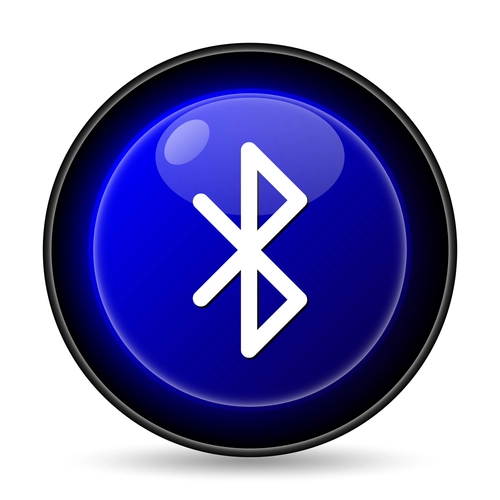General Surgery Coding Alert
Tighten Encounter Documentation to Ethically Maximize Pay
Audit-protect your claims.
If you or your surgeons get lazy and always report the same E/M code for every patient, you might be raising a big red flag that says “audit me.” Plus, you might be sacrificing legitimate pay for your practice.
Do this: Follow our experts’ guidelines to brush up on your E/M coding skills and make the most of this part of your surgery practice billing.
Avoid the One E/M Code Rut
Although your surgeons’ E/M encounters might legitimately cluster around a few codes, be on guard against constantly reporting the same code because of sloppy documentation (such as 99214, Office or other outpatient visit for the evaluation and management of an established patient…).
Instead: Look through the patient’s documentation, properly account for all the components of the E/M service, and then arrive at the proper code for the encounter. If you find the documentation lacking, ask the surgeon for details, and explain the importance of noting each of the E/M components in the encounter note to achieve proper pay.
Make sure you account for History, Exam, and Medical decision making (HEM) in the documentation, or just two of those elements for some established patient codes, and pick the proper E/M level accordingly.
Choose guidelines: Coders can choose whether to follow the 1997 or 1995 documentation guidelines when billing E/M services. “I rarely see that the use of the 1997 E/M documentation guidelines benefit surgeons. They will usually end up with a much lower E/M code if they use the 1997 guidelines rather than the 1995 guidelines,” says Marcella Bucknam, CPC, CPC-I, CCS-P, CPC-H, CCS, CPC-P, COBGC, CCC, internal audit manager with PeaceHealth in Vancouver, Wash. “You should use the rule set that provides you with the highest level of service.”
Capture History Components
The clinician should include in the encounter notes the necessary elements of history, which are History of Present Illness (HPI), Review of Systems (ROS), and Past, Family, and Social History (PFSH).
“Obtaining the patient’s HPI is an important first step in determining the etiology of a patient’s problem. The HPI information can assist a practitioner in arriving at the patient’s diagnosis,” says Cynthia A. Swanson, RN, CPC, CEMC, CHC, CPMA, senior manager of healthcare consulting for Seim Johnson in Omaha, Neb.
For instance: A brief HPI, in which your clinician records only one to three elements, can support 99213, but you may be able to report a higher level code if your clinician documents an extended HPI with four or more elements.
“Code 99213 requires one to three HPI elements and the 99214 requires four or more if the history is going to be counted toward the service level,” says Suzan (Berman) Hauptman, MPM, CPC, CEMC, CEDC, senior principal of ACE Med, a medical auditing, coding and education organization in Pittsburgh.
Similarly, when reporting PFSH, if your clinician does not note any changes in the PFSH or at least make a note stating, “PFSH not changed from previous visit,” you might end up reporting a lower level code than appropriate.
Your E/M code choice also depends on the ROS component. “The clinician should review the number of systems applicable to the current condition,” Hauptman states. “If billing 99213, the ROS must include at least one system. When billing 99214 and the history is one of the two key components used toward the service level, at least two systems must be reviewed.”
Count Physical Exam Elements
Your physician must also document which “organ systems” he checks on physical exam, and specifically which “bullets” he checks within the organ system based on the 1997 E/M guidelines. For instance, “examination of thyroid” is a bullet point under the “neck” organ system in the E/M guidelines.
Choose one: You should assign the level of physical exam based on the following criteria:
For a fuller discussion of the physical exam component, see “E/M Reporting, Grab Value From ’95 vs. ’97 Guideline Distinction” in General Surgery Coding Alert Vol 14 No 10.
Consider Medical Decision Making
When considering the Medical Decision Making (MDM) component of the E/M service, you should check documentation to find these elements:
These elements will help you understand the level of the MDM and the E/M code that it supports. “Medical decision-making reflects the intensity of the cognitive labor performed by the physician,” says Mary I. Falbo, MBA, CPC, CEO of Millennium Healthcare Consulting, Inc. in Lansdale, Penn. “The official rules for interpreting the MDM are identical for both the 1995 and 1997 E/M guidelines.” The elements of MDM will also help in identifying the severity of the patient’s problem (e.g. self-limited/minor, low, moderate or high), which may also help in assessing the level of E/M code to report for the encounter.
Check if Time-Based E/M Reporting Gives Higher Level Code
Rather than basing your E/M code selectin on HEM, you can code based on time if more than 50 percent of the encounter was spent on counseling and/or coordination of care. To do so, your clinician’s note must document the time and describe the counseling and coordination of care. Coding based on time may allow you to report a higher level E/M code.
For instance: Your surgeon documents an office visit for an established patient that earns 99213 based on HEM, but the note also documents that 15 minutes of the 25 minute encounter was spent discussing test results and the patient’s prognosis following a procedure. Because more than 50 percent of the time was spent in coordination of care, you can code 99214 for the visit.
Related Articles
General Surgery Coding Alert
- CPT® Update:
Use 43284-43285 for Esophageal Sphincter Augmentation Device
Look for deleted ‘emerging technology’ codes. If your surgeon performs a laparoscopic procedure to place [...] - CPT® 2017:
Angioplasty Update Means Out With the Old, In With the New
Don’t distinguish new codes by open or percutaneous. You need to relearn how to code [...] - E/M Briefing:
Tighten Encounter Documentation to Ethically Maximize Pay
Audit-protect your claims. If you or your surgeons get lazy and always report the same [...] - You Be the Coder:
Capture Distinct FNA Sites
Question: Our surgeon performed an FNA on a palpable 2 cm nodule of the right thyroid [...] - Reader Question:
Beware Modifier 'Solutions'
Question: When we see a claims denial in our practice, some of our staff is quick [...] - Reader Question:
Bundle RS&I With UFE
Question: Our surgeon performed a diagnostic CT angiography with contrast for a patient with suspected fibroids, [...] - Reader Question:
Don't Let PICC Line Removal Fool You
Question: When our surgeon replaces a PICC line, we report 36584, but I don’t see a [...] - Reader Question:
'Extensive Undermining' Points to Repair Choice
Question: A patient presented with a deep, ragged, debris-filled wound on her abdomen from falling onto [...]




